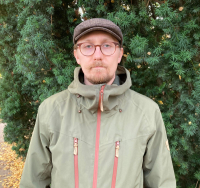Health Economics: Who takes out private health insurance?

One of the fields to which the Instrumentarium Science Foundation grants funding is health economics. In his doctoral dissertation, Konsta Lavaste studies how the supply of health services affects people’s decisions to take out private health insurance.
Who buys private health insurance? How does the distance to someone’s public health centre affect whether they take out insurance? What about the quality of health services? How does customers’ freedom of choice affect the improvement of health services’ quality? These are a few questions to which doctoral student Konsta Lavaste at the University of Jyväskylä seeks answers in his doctoral dissertation research, which is partly funded by the Instrumentarium Science Foundation.
‘The results of the study are still preliminary, but basically, the closer a private medical centre is, the more private health insurance people take out. The proximity of a public health centre or the price of health services are not really connected to how many people take out insurance. In public specialised medical care, the client's freedom of choice seems to increase competition among public service providers, although it does not appear to directly improve the quality of services,’ Lavaste says, briefly summarising the results of his research.
Lavaste was granted EUR 2400 from the Instrumentarium Science Foundation for his doctoral research in 2021. The payment of the grant began at the beginning of 2022 and will continue until the end of the year.
Statistical and quantitative health economics
Lavaste's doctoral dissertation is made up of three articles, the first of which focuses on the relationship between private health insurance and the proximity of services. The topic of the second article is the impact of the customer's freedom of choice and the resulting competition on patients' choices and the quality of health care. An example of the services compared is hip and knee replacement surgery. In writing the latter article, Lavaste has been part of a research group, whose other members are Mika Kortelainen, Tanja Saxell, Liisa Laine, and Luigi Siciliani. The third article of the dissertation is still in its planning phase, so Lavaste was unable to speak any more about it at this stage.
‘In the first and third articles, my research data were given to me by a Finnish insurance company. I have combined the data related to health insurance with Statistics Finland's postcode data and thus been able to determine the relationship between health centres and health insurance using statistical and quantitative research methods. So, I’ve used the typical research methods of economics – and of health economics,’ says Lavaste.
Fierce competition makes funding essential
The Instrumentarium Science Foundation grant has enabled Lavaste to work full time on his doctoral dissertation. During his research, he has also occasionally received pay from the University of Jyväskylä and a grant from the Yrjö Jansson Foundation.
'Not many health economics researchers are aware that the Instrumentarium Science Foundation awards grants for research in our field too. It’s great that such an opportunity exists, as the topic is important for Finland's national economy. In Finland, we have a group of excellent health economists who compete with researchers from many other fields for the same funding,’ Lavaste explains.
Grant acknowledges importance of research
Naturally, Lavaste does not receive funding for his research from the abovementioned Finnish insurance company. This would significantly reduce the credibility of this research.
‘The grant I’ve received from the Instrumentarium Science Foundation is also very important to me because it opens up opportunities to apply for new funding from other funders. Each grant brings recognition and encouragement and shows that my research is important and meaningful. The Instrumentarium Science Foundation has a good reputation among scientists. We hope that in the future, the Foundation will be able to offer even more funding applications to health economists.’
Text: Kai Tarkka / Viestintäpalvelu Taika Oy
Image: Konsta Lavaste
